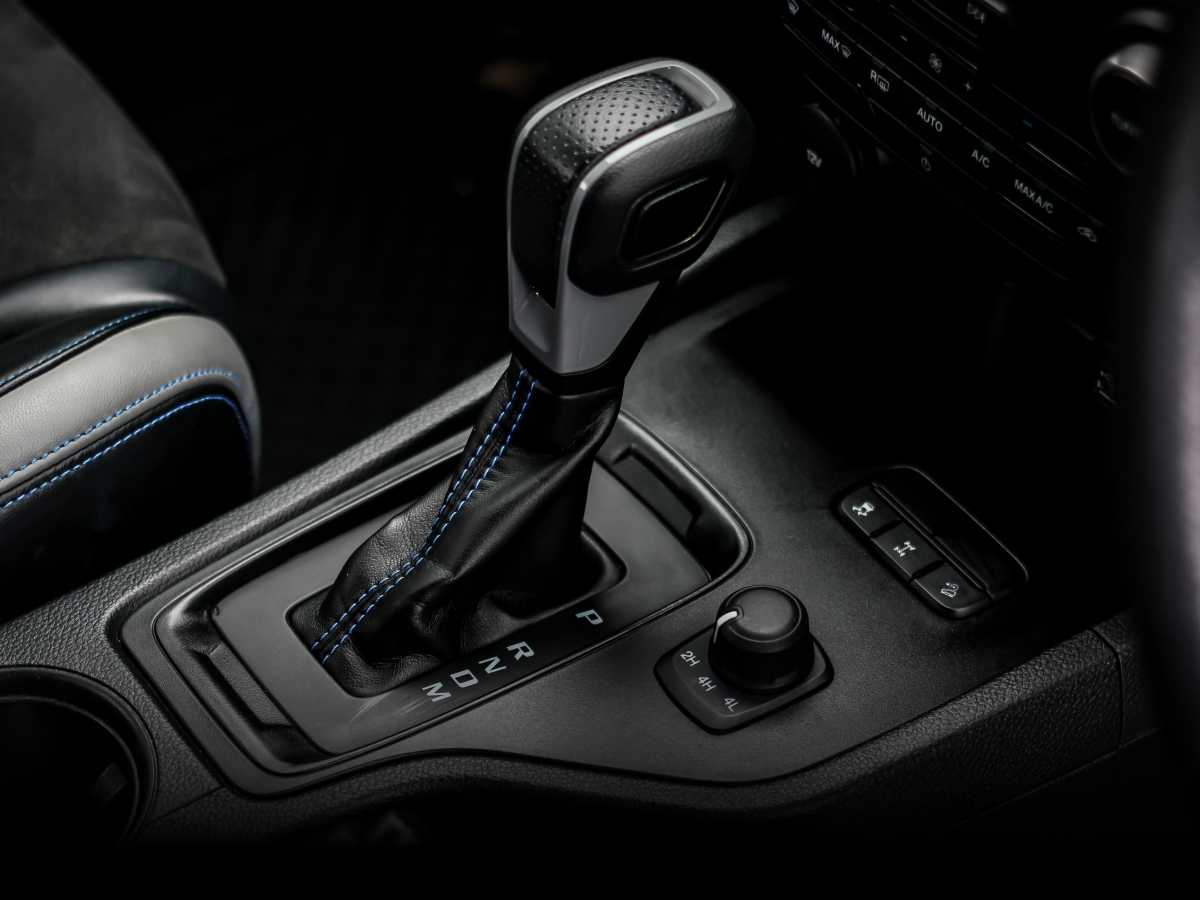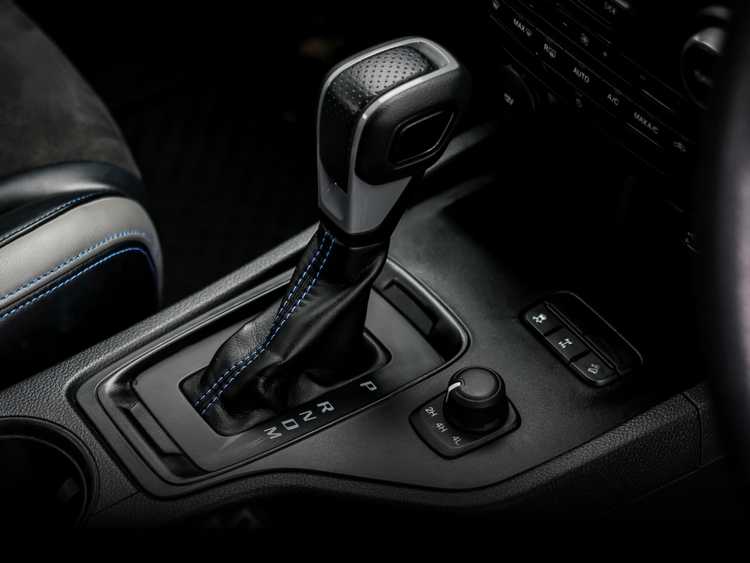

Types of Automatic Transmissions
- 1All automatic transmissions use a two pedal driving configuration
- 2Automatic transmission cars are ₹ 50,000 to ₹ 1.5 lakh more expensive
- 3AMTs are the most fuel efficient type of automatic transmission
Automatic transmissions have become crucial today in urban India due to the heavy congestion that occurs on roads, especially during rush hour. This has led to more and more people opting for the two-pedal driving configuration over a three-pedal setup. However, when buying a new or a used car with an automatic transmission, it is important to remember that all types of automatic transmissions have their own advantages and disadvantages. They will differ in how they perform, the kind of maintenance they require and how they affect your car’s resale value as well in the second hand market. Therefore, we have put together this article to give you a detailed overview about automatic transmissions before you finalise your buying decision.
Types of Automatic Transmissions
There are four major types of automatic transmissions called AMT, Torque Converter, DCT and CVT. When you zoom out and look at the history of automobiles from a bird's eye view, you will realize that different automatic transmissions were invented to address different needs at different points of time, and therefore, each of them serves a different purpose.
Automated Manual Transmission (AMT)
AMT is the most recent type of automatic transmission to be developed for mass market cars. In fact, the AMT became popular because Indian car makers pushed through to develop an automatic transmission for Indian consumers that was economical to manufacture and maintain, comfortable for Indian driving conditions and fuel efficient as well.
As their name suggests, AMTs are based on manual transmissions. The only difference is that the gears and clutch are operated by an electric or hydraulic actuator. This removes the physical stress that a driver has to bear when using a manual transmission.
Indian car makers developed AMT transmissions because of the need for a low-cost transmission option that could also offer the convenience of a traditional automatic. Modern AMT transmissions are also highly fuel efficient and nowadays even surpass their manual counterparts by a small margin. The downside of AMTs is that they can sometimes be jerky during gear changes.
The maintenance of AMTs is similar to that of manual transmissions. The most common things one needs to remember is to change the transmission oil according to the manufacturer’s recommendation and to replace the clutch packs when they wear out.
Torque Converter
A Torque Converter is the oldest type of automatic transmission available for mass market cars. It eliminates the need for a clutch and instead uses fluid dynamics to connect or disconnect the engine from the transmission.
In its construction, a torque converter is made up of for four main parts:
- Pump (Impeller) - A pump is connected to the engine via a flex plate. A flex plate is similar to a flywheel in a manual transmission vehicle and transfers the engine’s rotational motion to the pump. The pump spins with the engine and its primary job is to push the transmission fluid inside the torque converter and into the turbine.
- Turbine - The turbine starts spinning as it is pushed by the transmission fluid, which in turn spins the input shaft of the transmission.
- Stator - The stator consists of a set of blades which are positioned between the pump and turbine. It is responsible for redirecting the transmission fluid coming off the turbine back into the turbine in an efficient manner.
- Lock-up Clutch - A lock-up clutch is found in modern torque converters. It locks the turbine with the pump at higher speeds and eliminates the slippage created by the transmission fluid. This helps in improving acceleration and fuel efficiency.
.jpg)
Torque Converters are used in many mass market and luxury cars. Its biggest advantage is its robustness as there is negligible wear and tear in its working. It is also great for transmitting high amounts of torque, which would cause other types of transmissions to wear out faster.
The maintenance costs are comparatively low as only the transmission fluid needs to be changed at predefined intervals. However, a Torque Converter is generally expensive and also weighs more than other transmissions.
Dual Clutch Transmission (DCT)
DCTs are a recent invention compared to other types of automatic transmissions. They were initially developed to provide a quicker shifting experience in sports cars but over the years, the technology has trickled down to mass market cars as well.
In this type of transmission, there are two clutches which are connected to the engine and can be individually engaged and disengaged. One clutch controls the odd set of gears whereas the other clutch controls the even set of gears. This allows it to pre-select the next gear in advance, reducing the overall time taken to complete the gear shift. This is why a DCT is preferred in performance-oriented cars.
While a DCT enhances performance and is smooth in its operation too, it is one of the most complex types of automatic transmission. They are also more sensitive to heat and have sometimes been known to go into a limp mode or even sometimes fully break down. However, improvements in technology over the years has mitigated these issues to quite an extent. Despite that, repair costs for a DCT are generally higher than other types of automatic transmissions because of its complex design.
Continuously Variable Transmission (CVT)
CVT is a completely different kind of automatic transmission as it has no actual gears, but has the capability to replicate infinite gear ratios. The transmission has two variable diameter pulleys, one of which is connected to the engine and the other one to the output shaft that drives the wheels. The two pulleys are connected by a belt or chain.
.jpg)
The TCU continuously monitors and changes the diameter of both pulleys to achieve the desired gear ratio. This allows the engine to operate at a particular RPM across a wide range of vehicle speeds. This configuration allows engineers to tune the powertrain for fuel efficiency, as the engine is mostly kept at lower RPMs during acceleration and the gear ratio keeps changing to accommodate for the change in speed.
As there are no shifts happening in a CVT, it is quite smooth in its operation. However, the changing diameter of the pulleys can make the power delivery feel sluggish at times. It is commonly referred to as the ‘rubber band effect’ in a CVT. They don’t require periodic maintenance, although a special CVT fluid is used to lubricate the chains and pulleys. The chain and pulleys can wear out over time and might need to be changed. CVT repair bills can be expensive if multiple major parts need to be changed.
Comparing Automatic Transmission Types for Cars: Key Factors
Driving Experience:
An AMT feels like a manual transmission in its operation. The only difference is that in older AMTs, there is a considerable head-nod action in between gear changes and it can be mildly irritating. For most parts, modern AMTs have ironed out this problem. Most AMTs now offer a smooth driving experience, although the time taken to shift gears is longer than other types of automatic transmissions.
Torque Converters offer a smooth driving experience due to its fluid coupling. They were once known for being slow in shifting gears but newer Torque Converters have become rather quick.
DCTs are known for their quick shifting speeds and they tend to operate the best when the driver squeezes out performance from the powertrain. The shift quality is mostly smooth, however, older DCTs were known for being lurchy in their shifts at really slow speeds. Again, it’s an issue that has been mostly worked out with the advancement in technology.
CVTs were once banned in Formula 1 for being too quick but mass market cars feature CVTs that are tuned for fuel efficiency. It results in a smooth operation for driving around at regular speeds, however, CVTs feel slow to respond when you demand more performance at a short notice, such as in the event of a quick overtake.
Fuel Efficiency
AMTs are the most fuel efficient type of automatic transmissions, and that is a result of their rather simple design as well as tuning.
Older Torque Converter cars used to be quite inefficient for the engine in its fuel consumption but modern technology has made them much better. So much so that Torque Converters today are on par or on par with manual transmissions.
DCTs are performance-oriented transmissions and can aid the quick consumption of fuel when driven in a spirited fashion. However, when driven with a light foot, a DCT equipped car can also be fuel efficient.
Cars with CVTs are known for being fuel efficient when driving around at consistent speeds. However, quick bursts of acceleration can be equally bad for the fuel efficiency as well. CVTs are the most efficient in urban areas where speeds are relatively low and the demand for busts of acceleration is low.
Resale Value
As a rule, nowadays cars with automatic transmissions hold their value well. That said, certain transmissions can throw up a few issues.
AMTs are reliable and fuel efficient. AMT equipped cars tend to hold their value well in the second hand market, largely due them being mostly trouble free and incurring a lower running cost.
Torque Converters are known to last the lifetime of a car without serious issues. Older Torque Converter models aren’t good at holding their value due to their inefficiency and sedate performance. However, cars with modern Torque Converters tend to come with a premium attached.
DCT cars come with a premium price tag too in the second hand market, however, there is a caveat. DCT cars that have suffered malfunctions to the transmission become tainted, and it often leads to a quicker depreciation in their price.
CVTs, being reliable and efficient, tend to work well for most buyers and thus hold their value as well as any other automatic transmission.

Tips for New and Used Car Buyers
As far as new car buyers are concerned, you don’t really have to worry about the mechanical health of a transmission as it is brand new. However, you should take a test drive of the vehicle with the particular type of transmission to understand if it suits your driving style.
As for used car buyers, transmissions incur regular wear and tear and poorly used cars can often have bad transmissions. To find out what you are dealing with, take a test drive. If it feels like the engine is spinning and making power but that power is not reaching the wheels, you could be looking at a worn out clutch. This is applicable to CVTs as well, however it is the chain and pulleys that wear out too much.
Pre owned automatic transmission cars that are driven rashly and not serviced properly often end up feeling jerky in their shifts. On the test drive, feel the transmission go through the gears and if it feels too jerky for regular driving scenarios, you could be looking at a transmission with heavy wear and tear on it. You should ideally avoid such cars as they can develop deeper issues.
Conclusion
Picking the right automatic transmission and knowing its pros and cons are crucial to a happy driving experience. Buyers who prioritise a lower overall cost should look towards buying an AMT equipped car. Torque Converters and DCT transmissions are all-around transmissions that perform well in most scenarios. CVTs are best reserved for those who give preference to fuel efficiency and smoothness.
Frequently Asked Questions
Expand all































